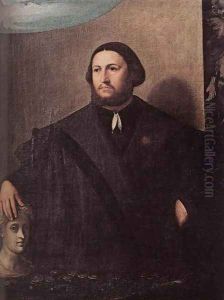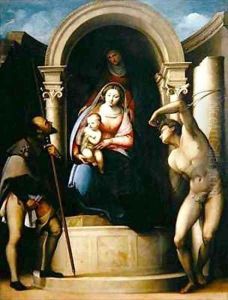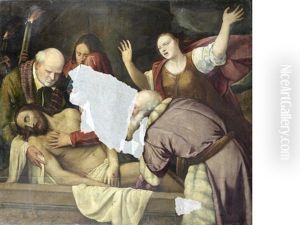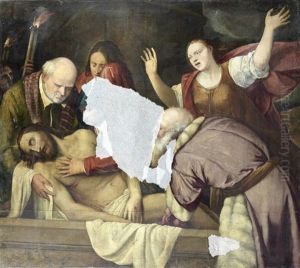Sebastiano Florigerio Paintings
Sebastiano Florigerio, though not as widely recognized as some of his contemporaries, was an Italian Renaissance artist whose contributions to the art world during the early 16th century remain of scholarly interest. Born in 1490 in Udine, a city in the northeastern part of Italy, Florigerio was a product of the vibrant cultural and artistic milieu that defined the Italian Renaissance. His works, primarily focusing on religious themes, reflect the period's deep interest in humanism and the exploration of human potential within the context of Christian faith.
Florigerio's training and early career are not thoroughly documented, but it is evident from his stylistic influences that he was exposed to the works of prominent Venetian artists of the time. The Renaissance in Venice was characterized by its sumptuous use of color and a keen interest in the effects of light, aspects that can be observed in Florigerio's paintings. His most notable works include altarpieces and frescoes for churches in and around Udine, where he managed to blend the narrative clarity and decorativeness that were hallmarks of the Venetian school with his own unique sensibilities.
Despite his apparent skills and contributions, Sebastiano Florigerio's career was relatively short-lived; he died in 1528 at the age of 38. The reasons behind his early demise remain a matter of speculation among historians. Nevertheless, his artistic legacy, though limited in quantity, provides valuable insights into the evolution of Renaissance art in northern Italy. Florigerio's works are characterized by their vivid expression, detailed landscapes, and the delicate portrayal of figures, elements that underscore the transitional nature of art during his lifetime, bridging the High Renaissance and the emerging Mannerist style.
After his death, Florigerio's influence waned, overshadowed by the towering figures of the Renaissance such as Leonardo da Vinci, Michelangelo, and Raphael. However, recent scholarship has begun to reassess his contributions, recognizing him as an important figure within the regional art history of the Friuli and Veneto areas. Today, Sebastiano Florigerio is appreciated for his role in the rich tapestry of the Italian Renaissance, representing the diverse and localized expressions of a movement that shaped the course of Western art history.



